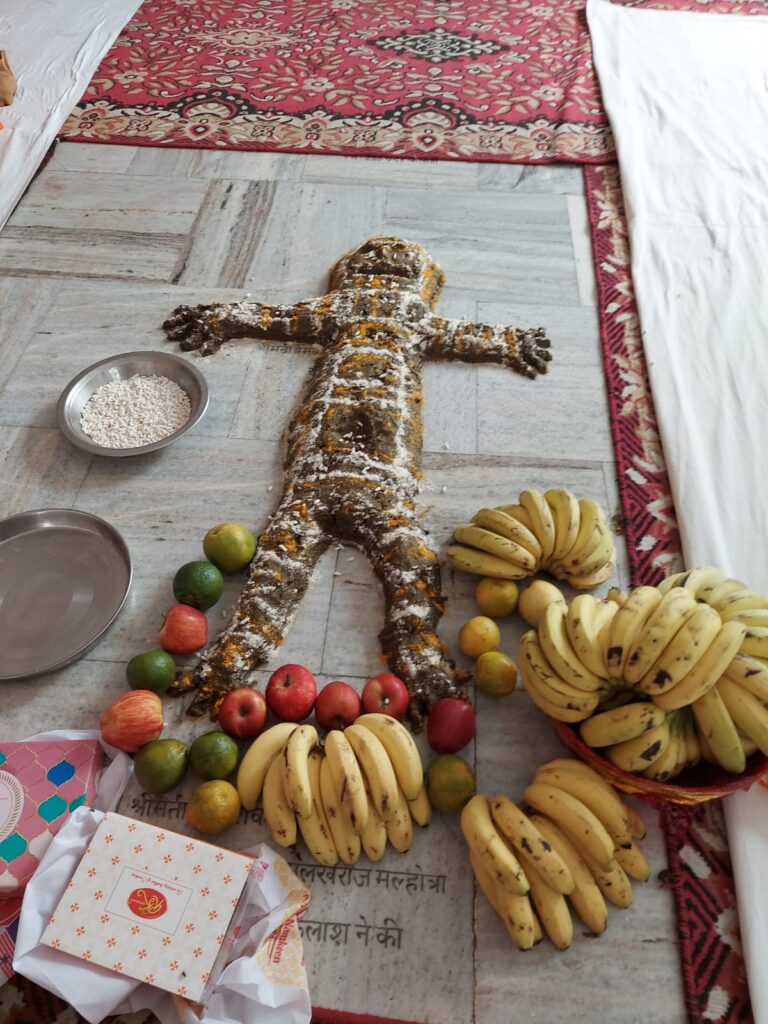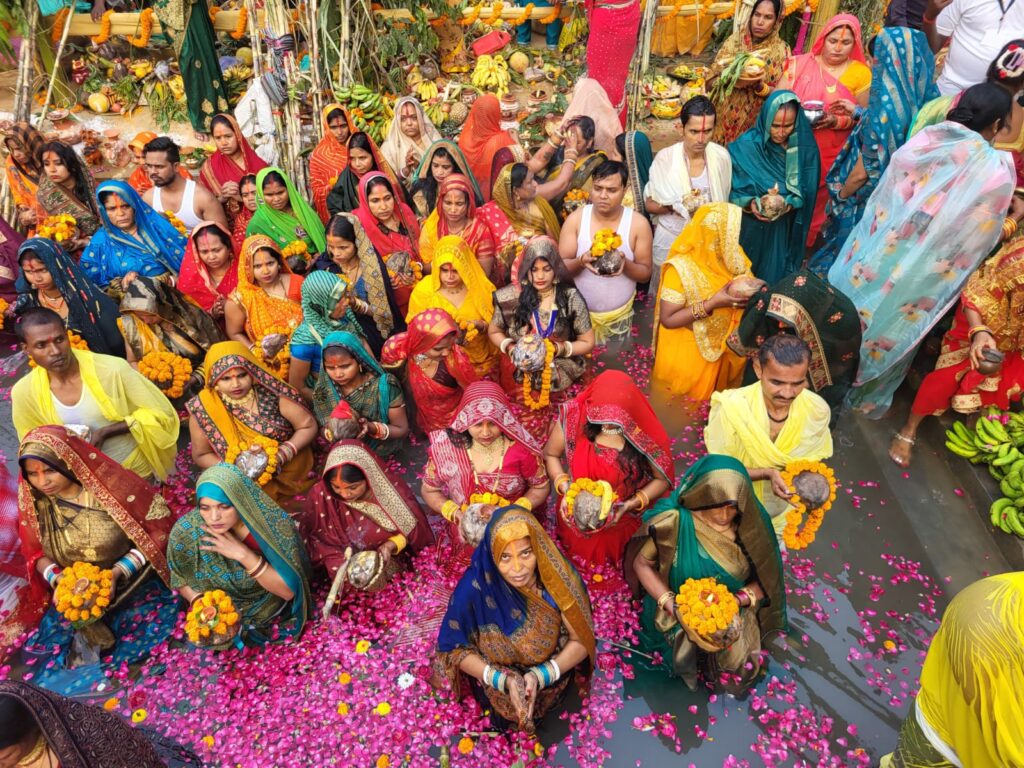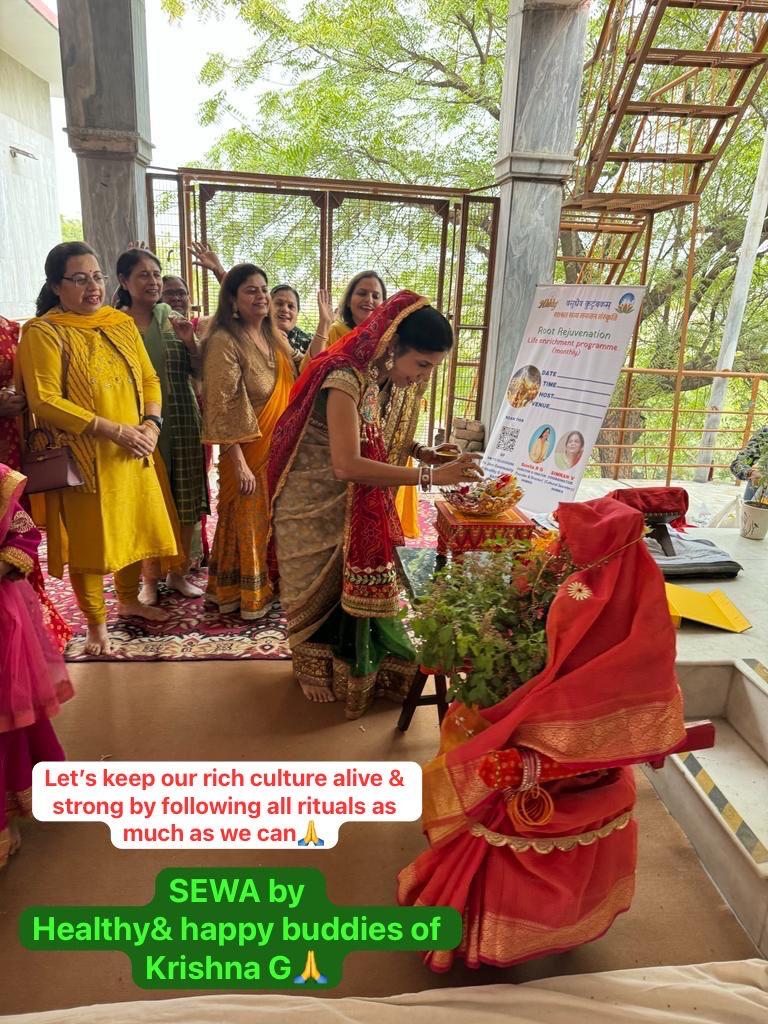Come November, houses are lit up for Diwali.
Soon after Diwali, Govardhan puja was celebrated in the Mahavirji mandir on the 14 Nov.
While the first three days of Diwali are days of prayer to sanctify wealth and invite greater wealth into the devotee’s life, the Annakut day is for offering gratitude for Krishna beneficence.
Govardhan puja is a principal ritual performed during Annakut. Lord Krishna is made out of cow dung in a horizontal position. After completing the structure, it is decorated with earthen lamps, seenkh and candles. After worshipping, the structure of the Lord is fed by the worshipers and the ladies fast. Prayers are made to Lord Govardhan.
As described in the Bhagavata Purana, Govardhan puja is chiefly identified with Krishna lifting the Govardhan Hill on his finger to protect those who sought his refuge from Indra’s torrential rage.
Preparations begin very early in the morning as Chappan bhog is prepared to offer to Lord Krishna.
All the devotees send vegetables and grains etc to the temple, which are then cooked by professional cooks.
The puja consists of bhajans sung by the local ladies followed by Aarti conducted by the priest of the temple. All the devotees do a parikrama of the idol.
The food which consists of karhi, rice, mix vegetables, bajra khichdi, halwa, puri and ladoo was served near the yagyashaala.
Chhat is celebrated on the 6th day of Diwali. It was a four-day festival (16th to 19th Nov) organised by Ram Janaki Sewa Samiti (RJSS) in Atal Park adjacent to the mandir. Prayers were offered to Surya devta, early in the morning while standing in water.
Area MLA, Saurabh Bharadwaj, councillor, Shikha Rai and Bansuri Swaraj graced the occasion on the 19th.
Contributions from local residents poured in to assist in the organization of the function. Any shortfall of funds is met by collective contribution of the active members of RJSS.
The mandir provided space for cooking Prasad etc., electricity connection and passage for the function.
Tulsi Vivah is a Hindu festival that celebrates the marriage of the Hindu deity Vishnu to the Tulsi plant. The festival is typically held in the month of October or November, coinciding with the onset of the wedding season in India. The festival is an important part of Hindu belief and tradition and it is observed by Hindus all over the world. The tulsi plant is considered to be a sacred symbol of Vishnu and the marriage signifies the union of Vishnu and Lakshmi, the goddess of wealth and prosperity. It is believed that people who get married during this time lead a blissful married life.
The festival also marks the beginning of the Hindu new year and it is time for Hindus to reflect on their relationship with God. The festival is a reminder of the importance of devotion in our lives. It also teaches us to respect all forms of life and to protect our environment. The festival is a joyous occasion that reminds us of the importance of loyalty and commitment in our lives.
Tulsi vivah was celebrated in the mandir on the 24 Nov by Healthy & Happy Buddies of Krishna ji Foundation. This foundation holds monthly programs to keep our rich culture alive and strong by following all the rituals and strives to sensitise the next generation. Deep daan was done by many devotees. Monetary help was provided to some people of the EWS of the society, to be able to marry their daughters.
Prasad of poori, halwa and aloo sabzi was distributed to all the attendees. Some of the ladies had brought home made delicacies to serve as Prasad.





Popular Stories
The Water Couple’s Journey: From Cleaning Tanks to Complete Water Solutions!
Locals Felling Trees Near Sec A Pkt C
Winning Has Become a Habit for Divya
Is Green Park Heading Towards A Slum
Haphazard Parking, Narrow Walking Space In M Block Market
Geeta Atherya Spoke On Cacti & Succulents
Recent Stories from Nearby
- Park Revival! March 22, 2025
- In Loving Memory March 22, 2025
- GKIIWA Installs 6 Aerobins To Collect Wet Waste March 21, 2025
- We Must Utilise Our Parks For A Healthy Heart And Mind March 21, 2025
- SHO Meet March 21, 2025







